I was a Kona coffee farmer for almost a decade. While selling my coffee at local farm markets I would often hear “Gee, this is expensive! Is it really worth it? What makes Kona coffee so special?”
It’s a fair question. Kona coffee is priced quite a bit higher than the usual coffee found on a shelf at your local grocery store. Ironically, the things that make Kona coffee expensive are the things that make it special. The fertile soil, ideal weather, and the “by hand” farming techniques required to grow it, all contribute to the delicious flavors you will find in your cup.
What Makes it Kona Coffee?
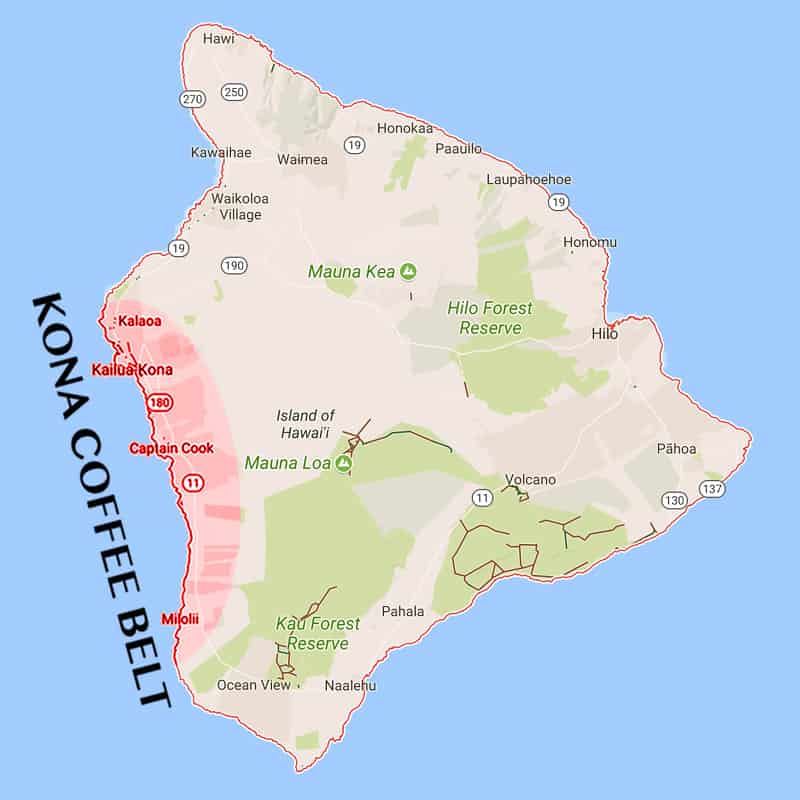
Kona Coffee is only grown in one location in the world: The North and South Kona Districts of the island of Hawaii. The state of Hawaii is made up of eight major islands, the largest of which is also named Hawaii and is usually known as The Big Island. The Kona District was divided by the US Military during World War II into North and South Kona. They can be found on the West Side of Hawaii Island. Only coffee grown in this narrow geographical area can be marketed as Kona coffee. The best of the coffees come from the narrow band known locally as “the coffee belt.”
Fun Fact
Coffee is grown in other districts on The Big Island – Kau-grown coffee has been building quite a reputation of late – and also on other of the Hawaiian Islands, such as Maui, Oahu, and Kauai.
The Soil
Volcanic soil is well-known for its effects on plant growth. As luck would have it, the Hawaiian Islands are part of the Hawaiian – Emperor seamount chain, entirely made of ancient (and not so ancient) volcanoes. The Big Island itself is made of five volcanoes that have popped up as the earth’s crust passes over the Hawaii Hotspot. The Kona districts are on the flanks of Hualālai and Mauna Loa, where my farm was located.
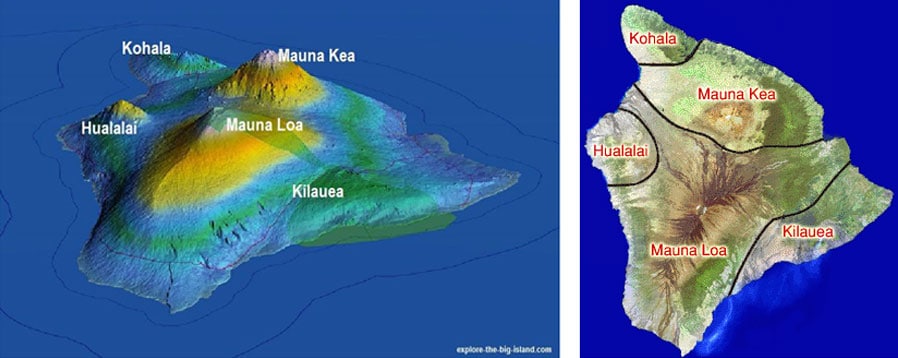
Fun Fact
Mauna Loa is the largest mountain in the world that has part of its mass above water. Mauna Kea, another of the volcanoes is the tallest – taller than Mount Everest when measured from its base on the sea floor and Kilauea, until recently, had flowed pretty much non-stop for over 30 years.
The Weather
Hawaii is famous for its tropical weather. People save money their entire lives to come to what they believe will be a paradise; in fact, my wife’s cousin informed us that Austrians use Hawaii and paradise interchangeably! And those visitors are usually not disappointed if they come during the dry season between November and April. The rest of the year can be subject to many rainy days, depending on the location of the jet stream. In general, however, a typical day on our farm meant a sunny morning, with clouds beginning to move in around noon. About 2:20, we would likely get a short rain shower, with the real rain likely to show up at 4:30.
Weather like this is ideal for coffee growing. The sun is great for the trees in the morning and the clouds roll in just when the sun is at its strongest. As the sun warms the ocean waters, the air expands, pushing the moist air up the mountain where it condenses, forming clouds and precipitation. The resulting afternoon and evening rains make sure that the plants stay properly hydrated. The dry season happens when it is time to pick and process. It is a climate perfectly suited for coffee growing.
The Farming
There are approximately 600 Kona coffee farms, with an average size of fewer than 5 acres. It is one of the few places in the United States where a small family farm can still be profitable. There are a few large farms, such as Greenwell Farms which contains some 80 acres and manages orchards on another 60.
The Trees
Kona coffee trees are almost entirely of the species Coffea arabica and come from the Guatemalan typica. Within the last decade, it has been determined that this particular variety has been growing so well, for so long in Kona, that it is now its own “Kona typica.” Since 2011, the Kona Coffee Farmers Association has recommended that all new plantings be from Kona typica stock.
Growing
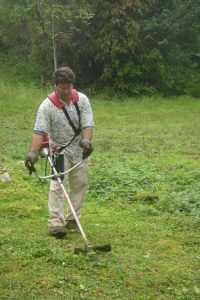
The challenges of growing Kona coffee are many. Many of the farms are located in difficult terrain – steep and rocky. Additionally, those in the coffee belt are located in areas where anything green wants to grow. Unfortunately, most of what wants to grow is NOT coffee. I used to joke that 90% of coffee farming in Hawaii is trying to beat back the jungle. While it might be an exaggeration, it sure didn’t feel like it! Weed whipping is an everyday job when you want to gain an organic certification and avoid chemical weed killers and fertilizers. On the plus side, composting is about the easiest thing in the world.
Every year, your trees require pruning. Depending on the pruning method you choose to use, either one-fourth of your coffee trees need to be “stumped” or you have to cut the oldest of four branches off of each tree. You definitely need a sharp saw and a strong arm because this is all done by hand.
Throughout the year, you check the trees to remove any unwanted growth, fertilize them, spray fungus to keep the berry borers at bay, remove vines that have grown seemingly overnight, and generally maintain the entire orchard. Eight or nine months after your flowerings, it is time to pick. Kona will bloom several times, so you only want to pick the coffee that is ripe. It must be picked by hand, so at least this is doable. A skilled picker can pick 400 to 600 lbs of cherry per day. I could pick 200 lbs. on a good day, dawn to dusk. Luckily, I had skilled help at picking time.
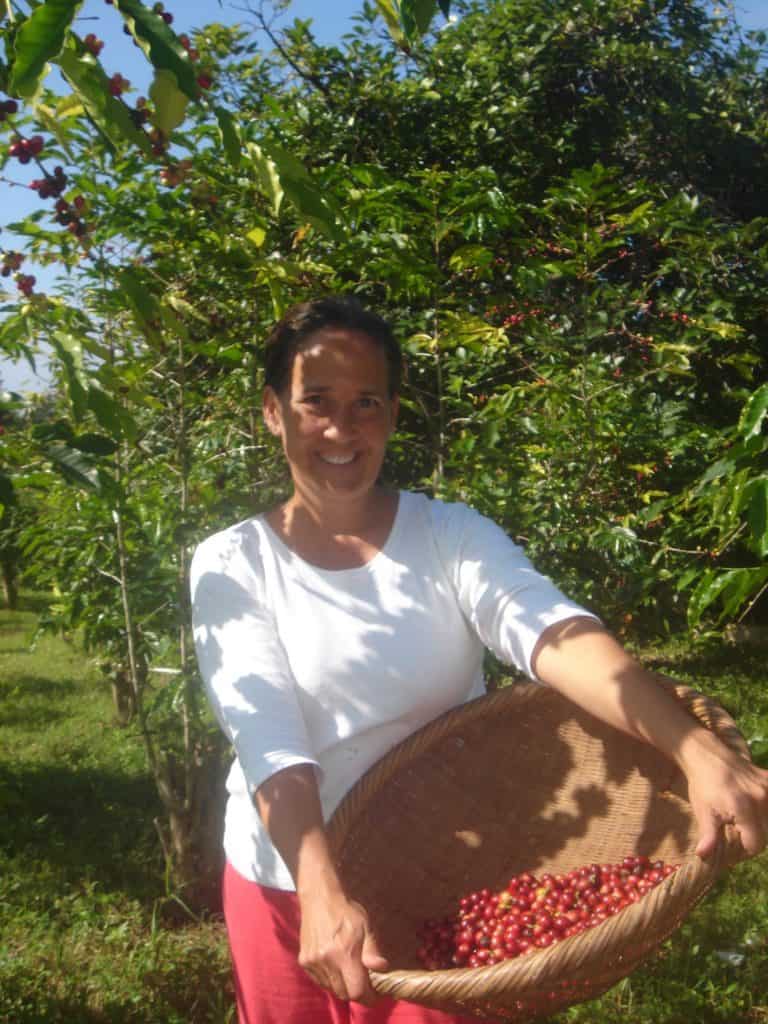
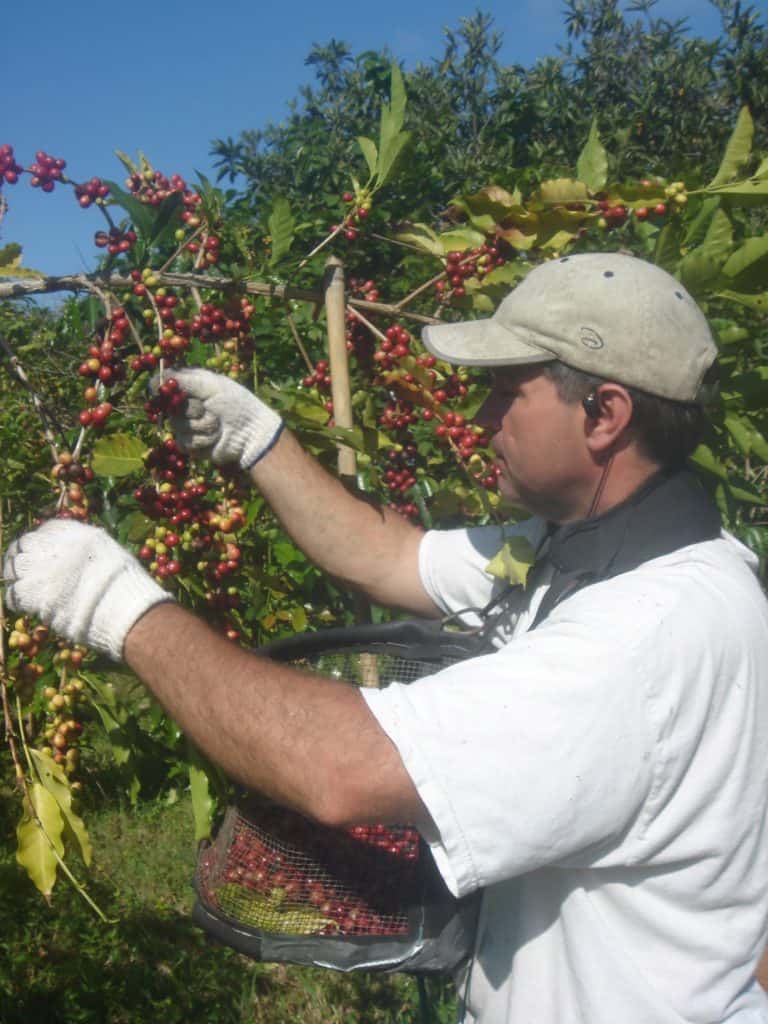
Processing
Once the coffee cherry is picked, it is pulped and demucilaged to remove the fruit and then dried, which can take two weeks if done in the sun. Remember, it gets cloudy every day. When getting ready for sale, it is milled to remove the seed coat, and then roasted. Then it must be bagged and sold.
Marketing
Selling Kona coffee can be challenging. If one desires the easy way, a farmer can sell his coffee cherry to a processor who will mix it with coffee from other farms and sell it under a brand name. This subjects the farmer to the vagaries of the marketplace. Sometimes the price is okay, but more often it barely keeps up with the cost to have it picked.
A One Man Show
A farmer can also do it all: websites, farm markets, and grocery stores are the usual ways, but some farms offer tours, and some have coffee shops where they sell their product by the bag and by the cup. A Kona coffee farmer must wear many hats.
Blends
Some processors blend Kona coffee with coffee from other parts of the world, such as Brazil or Central America. By law, these coffees must be marked clearly as such and contain a minimum of 10% Kona. But you have to look carefully: I once found coffee from The Kona Roasting Company that was not grown in Kona. The Royal Kona coffee company sells both 100% Kona and 10% Kona Blends. If you ever find what you think is a great price on Kona coffee, read the bag carefully. Some sellers are more scrupulous in their labeling than others. Every time someone told me that they had tried Kona and “didn’t think it was any big deal,” they had invariably bought it at T.J. Maxx or the like for $5. Guaranteed it was a blend. I mean think about it: If it is 10% Kona, then it is 90% something else. Guatemalan floor sweepings, maybe?
Conclusion
So, is Kona coffee worth the extra expense? In the end, that is up to you to decide. Individual farms and processors mean that there are variations in flavor and quality. The best Kona’s, properly prepared, are as good as any coffee I have ever tasted. The almost perfect growing conditions do their part to please your palate. The expenses that growers face are real: By the time you drink your cup, a coffee bean has been touched up to 40 times! Remember, Hawaii is located in the United States, and all those workers have to be paid US-style wages, which has to be passed on to the consumer. So when you think about it, Kona might actually be a bargain!

